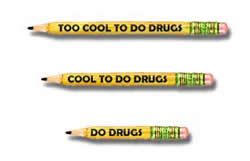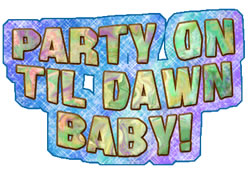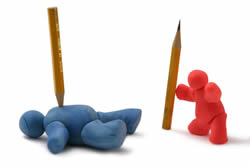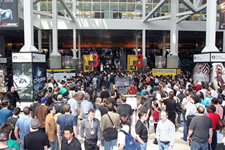Mistakes happen whether you’re a newbie or a seasoned trade show veteran, but you can avoid the 13 Most Common Trade Show Mistakes by following this advice. So, while your competitors are reading about Ed Sheeran or watching reruns of Stranger Things, let’s take a few minutes to super-size your trade show marketing skills.
1. Going Too Big
We all want to think we’re the big dog on the block, but we’re not. If you’re new to trade show marketing, starting with an inline 10 x 10 or 10 x 20 may make more sense. You learn what works — from graphics to display configurations — before investing in an island exhibit. For example, you’d be surprise how many folks think they need an enclosed conference room only to discover that their clients are more comfortable with an informal meeting area.
Most organizations participate in multiple trade shows each year. There’s usually a pecking order to those shows where some are more important than others. It may not make sense to “go big” at the secondary trade shows, when you could invest that money in your main show where you’ll generate more leads.
2. Going Too Small
In general, smaller exhibits get less traffic than larger exhibits, if for no other reason than location. Bigger exhibits typically are centrally located, closer to the entrance, and along the main aisles. However, the largest benefit of bigger exhibits is square footage and height. Island exhibits can include presentation area(s), multiple kiosks, seating areas, ample storage, large format graphics, overhead signage, and product displays. While these are still possible in inline displays, the space limits how much can be done.
There’s a school of thought that says, “At the very least, match the square footage of your main competitors.” Here’s another idea — determine what you want to accomplish at the show and what it will take to exceed those goals, and then design a booth that achieves them. It’s not rocket science, folks.
3. No Specific Goals
For whatever reason, some companies are on autopilot when it comes to their trade show marketing. If you ask them what they want to accomplish, their response it usually “increase sales” or “generate more leads.” Really? If those are your only goals, then you might as well toss in “World Peace” and “Ending Global Hunger” too.
Chances are your trade show goals coincide with your overall marketing goals, but you may not have the background to execute them in a 3D face-to-face environment. That’s where working with a knowledgeable exhibit professional makes all the difference. Just because you are a superstar at marketing, it doesn’t mean you know diddly about trade show marketing or exhibit design. A smart trade show professional will spend much of their time asking you what you want to accomplish.
4. Cluttered Graphics
Think back to the bulletin boards in your elementary school classroom. Does that memory make you smile? That’s very sweet . . . now do exactly the opposite for your trade show graphics. All that clutter may have been perfect for developing minds hyped up on Elmer’s glue and Crayola crayons, but our older brains can’t process that much information in 3-4 seconds. We need clear, straight-forward messages. That doesn’t mean your graphics can’t be colorful, witty, and creative. They just can’t be thematic chaos. The message should state who you are, what you do, and what problem you are solving in less than 4 seconds. Everything else is just pretty paper on a package. We like the pretty paper, but we like what’s in the package a whole lot more.
5. Giveaways for the Sake of Giveaways
 It’s funny how free pens, stress balls, and rulers can give us an inferiority complex. They have them. We don’t, so we feel like second-class citizens on the trade show floor. At the next trade show, we have trinkets, and we spend half our time giving them away just to justify having them in the first place. Don’t get me wrong. I like free stuff. But the free stuff better have a purpose. A bank that gives away nifty calculators. Smart. The chiropractor who gives away a pen shaped like a spine. Also smart. But a software company that gives away plastic water bottles? What’s the point?
It’s funny how free pens, stress balls, and rulers can give us an inferiority complex. They have them. We don’t, so we feel like second-class citizens on the trade show floor. At the next trade show, we have trinkets, and we spend half our time giving them away just to justify having them in the first place. Don’t get me wrong. I like free stuff. But the free stuff better have a purpose. A bank that gives away nifty calculators. Smart. The chiropractor who gives away a pen shaped like a spine. Also smart. But a software company that gives away plastic water bottles? What’s the point?
The same rules apply for prizes or drawings. The drawing should create a buzz at the show, and should serve as a mechanism to engage potential clients in conversation. Fish bowls where attendees drop off business cards to win an iPod attract leads, but not quality leads. Do you really want a stack of unqualified leads for your sales team to sort through? Probably not.
6. Booth Staff Not Trained
I know you’re telling yourself, “My staff knows the products and they know the company. Why should I have to train them?” True. Now recall the last time you went to the mall to shop. Those employees knew the products, and they knew the company. Did you feel like you received exceptional service. Did they approach you promptly, ask you open-ended questions, listen, and show you exactly what you wanted? Probably not.
Training before the show and before the show opens each day ensures that everyone understands the mission, that everyone knows their role, and that everyone gets their questions answered. Think of a trade show as a job interview. Every person who walks in the booth is deciding whether to hire you (or not). Can you really afford to lose a sale?
7. Poor Follow-Up on Leads
Why would you bring your own rope to your hanging? And, yet, the vast majority of exhibitors spend considerable cash preparing and participating in a trade show and then neglect the leads they gathered at the show. Either they don’t value the leads, or there’s no plan on how to handle them. Most of the time it’s the latter. What’s the saying, “Failing to plan is planning to fail.”
8. No Daily Booth Preparation
When your in-laws come to town, you spend days cleaning, organizing, and stressing over dust bunnies. Three days later, you don’t care anymore. There are dirty dishes piled in the sink and clothes draped over the recliner. The same scenario happens for most exhibitors. They polish and preen for hours before the show opens, and then by Day Two, they ignore the smudges, the carpet boogies, and the stray candy wrappers.
Every day is a new day in Exhibit-Land. Like Disneyworld, it’s gotta look perfect before the guests arrive. Assign that task to someone every day and create a checklist. Otherwise, it won’t get done, or the person with initiative will do it and resent it.
9. Partying and Socializing
 It’s a trade show. You’re suppose to socialize and party during the off hours. But . . . and here’s the BIG BUT . . . you need to be smart about it. First, you’re on company time. Even when you think you’re not on company time, you’re on company time. That’s just the way it is. If the company expects you to socialize with clients, then socialize and be on your best behavior. If someone has to tell you what that means, then you shouldn’t be socializing with clients.
It’s a trade show. You’re suppose to socialize and party during the off hours. But . . . and here’s the BIG BUT . . . you need to be smart about it. First, you’re on company time. Even when you think you’re not on company time, you’re on company time. That’s just the way it is. If the company expects you to socialize with clients, then socialize and be on your best behavior. If someone has to tell you what that means, then you shouldn’t be socializing with clients.
Second, trade shows may seem like a friendly gathering, and they can be, but they are actually a competition. What you say, where you say it, and who’s around when you say it, can have painful repercussions for you and your employer. We are all on high alert for hints, innuendos, and outright gossip about our competitors. It’s amazing what someone will tell you, or someone next to you will reveal, after a few drinks.
Finally, and this should go without saying, socializing should not interfere with your show responsibilities. Pace yourselves, cowboys and cowgirls. Showing up at the booth sweating tequila (no matter how good the tequila was) isn’t attractive.
10. Packing and Unpacking
I know. You’re tired, and you want to get back to your room, the airport, or home. That’s understandable. We all feel that way. But how you unpack or pack your booth will make your life much easier or much harder. You know deep down in your heart that it’s the right thing to do. Ultimately, the key to any successful trade show is planning and organization.Your exhibit is no exception.
Carefully unpacking the exhibit and organizing the packaging materials makes the assembly go faster and the repacking much easier. You eliminate the head scratching that invariably occurs at the end of the show. When you take the time to repack the exhibit right, you ensure that the exhibit arrives at the next destination in good condition and ready for the next show. Think of your exhibit as yarn. You have a choice. You can either toss the loose yarn in the case and hope for the best. Or you can wind it carefully into a ball.
11. Participating in the Wrong Shows (not participating in the right shows)
This one is tough. Too often, you never know until you participate. It’s kind of like “Mystery Date” where you don’t know if the person on the other side of the door is “dreamy” or a “dud.” The best advice is to ask your suppliers or strategic partners who may participate in the same show. What’s their take on the trade show and has it been beneficial? If possible, ask for specifics such as lead numbers, sales from the show, and promotional ideas. What works and what doesn’t work?
In the end, you have to decide based on your own experience. Sometimes the show would have been better if only you had done this or that. That’s fine. You’ll make the adjustment next year. Other times, it wasn’t a good fit because you’re selling candy at a diabetics convention.
What you don’t want to do is allow tradition or momentum to dictate whether you participate. Whether or not you’ve gone before shouldn’t determine whether you go or don’t go this year. Take the time to evaluate your marketing goals and determine whether the show contributes to those goals. If it does, then go.
12. Not Walking the Show and Talking to Competitors, Suppliers, and Potential Partners
 It’s tempting to just hang out in your booth. After all, it’s safe and comfortable. But trade shows are two way streets. Potential customers are there to learn and discover new products, services, and suppliers. You’re there to work with those customers, but you’re also there to learn and discover as well.
It’s tempting to just hang out in your booth. After all, it’s safe and comfortable. But trade shows are two way streets. Potential customers are there to learn and discover new products, services, and suppliers. You’re there to work with those customers, but you’re also there to learn and discover as well.
Every show is an opportunity to improve your “game.” What are your competitors showing? What are they saying? Are there any new products or services which would benefit your company? Are there trends you’ve overlooked and need to study and implement?
No one is asking you to spy, but friendly conversation goes a long way with friends and foes alike. It’s all in your attitude and your approach. Don’t be afraid to say “Hello!” and ask how the show is going. You want to be seen as warm and friendly, and not as a medieval fortress with the drawbridge closed. Obviously the same rules apply as the “Party and Socialize” section — namely, you need to be smart about what you share (and don’t share).
13. No Pre-show Marketing
This may be last, but it’s certainly not least. In some ways, it should be #1 if only to get your attention. There’s no reason, absolute no reason (unless you want to fail) not to have a pre-show marketing plan. You can spend a little, or you can spend a lot. At a minimum, you should contact your customers to see if they are attending the show. What they tell you may influence what you bring to the show and what you feature in your graphics.
Beyond that, the opportunities are limited only by your imagination and your budget: from pre-show mailings and emails to advertising and contests, and from show sponsorships to industry press releases. You already spend much of your time trying to attract attention to your company throughout the year. Take that energy and creativity and apply it to your trade show marketing. If there was ever a venue for taking risks, it’s a trade show. The conservative, Namby Pamby approach rarely works in trade show marketing.
Be bold and beautiful my friend. The show starts in 5, 4, 3, 2, 1.
–Mel White
http://www.linkedin.com/in/melmwhite
mel@classicexhibits.com
Classic Exhibits Network (LinkedIn)
*********************************
Based in Portland, Oregon, Classic Exhibits Inc. designs and manufacturers portable, modular, and custom-hybrid exhibit solutions. Classic Exhibits products are represented by an extensive distributor network in North America and in select International markets. For more information, contact us at 866-652-2100.
Tags: giveaways, promotional products, Trade Show Marketing, trade show mistakes





Thanks Mel, humorous and oh so true!
Cheers…
The golden rules, its nice to read them. Exhibiting for many people is an opportunity to mix it up some, travel, stay at nice hotels and eat great food. Unfortunately, business still has its place. As representatives of the Industry more expert emphasis on The Golden Rules should be addressed during the sales pitch. Most of us understand these rules, its the company writing the check that will benefit most from these simple guidelines. Make an effort, add the golden rules in to your every day sales pitch.
Stephen A.
Thanks Chuck! Good luck this season.
It’s funny how many people forget what they are exhibiting for. Just showing up at an event is not enough to get the attention you want. It is important to plan for months in advance in order to be a success. I like what you said about the giveaways. Give away items that make sense to your company.
Thanks Kristin.
Planning is the key. If you plan and prepare, you’ll have a less expensive and more rewarding trade show.
Well put
Great article and appreciate you putting it all together and sharing. I think trained booth staff and having a specific goal in mind are key.
Nice to see an article reinforcing common sense and logic that I have been utilizing for my trade show approaches for several years now! I’m no genius, but I am amazed by the large number of industry people and trade show exhibitors/attendees who can’t arrive at these conclusions(or develope them) on their own. I guess critical thinking and common sense just aren’t that common anymore! Great article! Kudos!
Thanks Peter.
Thanks Mel for the insite to things that make sense but are not thought of in the rush or hype of having a show. A game plan always produces better results than winging it!
Less clutter on the graphics, a meaningful giveaway specific to your company, as well as your packing and unpacking tips are very valuable.
Have a great day!
Great list! We teach a simple set of three “Critical Success Factors” for ROI on an event and you hit them all:
1) You must have enough of the right people in attendance (Pre-show marketing)
2) You must have clear, persuasive messages (Uncluttered Graphics for sure, and the messages must be targeted, compelling and clear about what to do next.)
3) You must generate actions by the participants that lead to business improvement (Following up on leads addresses that point. You must begin by designating a follow-up step into your strategy.)
Ed Jones
Constellation Communication Corp.
Event Measurement and ROI
These are great tips. I think it is very important to follow up on leads and this is a factor that seems to be skipped a lot. The whole reason of the show is to get your name out there and get sales/leads. Follow up with in a few days and make sure to send out personal emails, rather than a mass email.
Great article! I worked for a company that had a problem setting specific goals. The boss always wanted to show every device we made. I noticed that the shows where we spotlighted one specific piece of equipment always did better than ones that simply displayed the whole range of products. I pointed this out, but I think he was afraid that he would miss sales for all the other products if he didn’t show everything.
Another good one Mel!
Loved your graphic of the promotional pencil! What a great demonstration of the dangers of not thinking things all the way through! So often we find people just looking for a giveaway and no thinking any further. In fact, we’ve banned the word “giveaway” because there’s no point in simply giving stuff away. Promotional products should always be part of a planned strategy to meet the specific goal (your #3 point). When done right, they are one of the most effective tools in what should be an integrated toolbox.
Thanks Larry. How does the expression go . . . “If you fail to plan, then plan to fail.”
Love the presentation and the tongue in cheek approach to the very heart of the matter. You try to teach your clients over and over again and you still watch them fail, and then try to blame you. I want to print these and wrap them around a brick for delivery.
This is so well done! Thank you for sharing.
#3, 6 and 12…important points that I see exhibitors not paying attention to all the time…..and I’ve been an exhibitor and am now expo management.
#3. Specific goals: Being at a show can really only have a few purposes: generating leads, making contact with existing clients, checking out and/or “beating” the competition, new product launches, and demonstrating product. But each show will be different, and you’ll have different primary reasons for exhibiting……this is where a pre-show meeting a year to 6 months prior to a show, and a post-show meeting, with marketing and sales staff in attendance is vital. I began holding these meetings when I was a marketing assistant, in charge of organizing our participation in over 75 trade shows a year…..to think that the company had participated in these events year after year with no post-show or pre-show meeting to organize thoughts, understand why the show was important (often the sales reps might utter a few complaints at the marketing team, but there was never any meaningful dialogue), and gauge whether or not the 10×10 or the 20×20 was the way to go at each show….well, it blew my mind! I also used these meetings to dispense information, including lodging and travel, which helped me avoid the 40-something random emails per show I’d receive instead, but had become par for the course for my predecessor. I heard stories about the boxes they had worked so hard to pack up and ship never making it to the booth….and them being brought to a warehouse and told they could “look for their boxes,” so we began spray painting the sides of our boxes w/ our company name in red, we never had a lost box again! And, we heard the sales staff tell us that they really wanted to “out do” a rival at one trade show, and asked if we could move some marketing dollars from one show to another in order to achieve that…something they had wanted for over a decade. We learned a lot in those 40 minute meetings!
#6. Staff training: My husband owns a retail store, and what’s the first thing new associates are trained to do? Greet customers and engage them in conversation, smile. I am always amazed when I see exhibit staff sitting in their booth (our longest stretch of show hours runs just 3 hours) which makes it impossible to gain eye contact and begin that conversation because you’re now 2 or 3 feet below their level of sight, and you come across as well, not all that excited to be there. (If you must sit, try at least using a counter height stool vs. an ordinary chair.) Being able to talk intelligently about your products / services is great, but if you don’t start a conversation, you’ll never get to that point. For most organizations trade shows fall into the marketing dept’s responsibilities (signing up for the booth, graphics, shipping, sometimes even travel arrangements), including booth staffing, and the sales team will walk around the show vs. passively waiting for their clients and leads to walk by….leaving the marketers, and sometimes sales assistants, who know the products, but don’t have the sales finesse behind to represent. The sales team can likely spend a few minutes reminding the booth staff of a few basics: Appear energetic (don’t sit), smile, greet and start asking one or two key questions that the sales team likely uses all the time, but the marketers don’t use in sales copy, and are therefore unaware of it.
And, #12 again has me thinking about my husband’s retail store, he goes to check on the competition in his mall and a nearby mall a few times a week. Not knowing what your competition is doing, whether it’s beating you on price, or advanced technology/features is a huge mistake. You will never be able to overcome the “no…well, your competition is doing..(fill in the blank)” response made by a prospect. Is your competition’s price lower because it’s an older version, maybe one with limited features, your higher priced but newer product suddenly becomes the “right price.” If you know what your competition is doing, you can overcome the objection, if you don’t, you simply look like you don’t know your market.